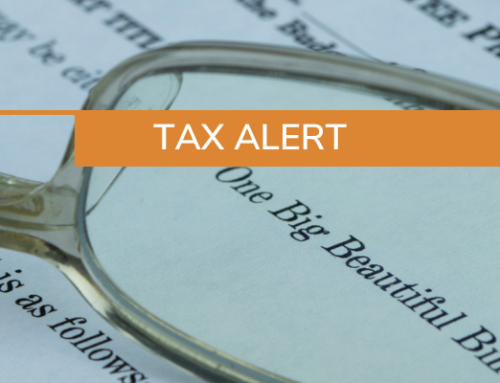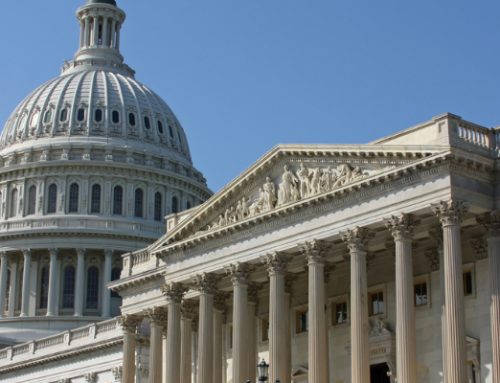The Paycheck Protection Program helped more than four million businesses continue to pay their employees during the coronavirus pandemic. Now that doors are reopening and businesses are looking to what’s next, the need for continued cash flow is critical. For the millions of companies that weren’t able to utilize the Paycheck Protection Program, a valuable option is utilizing available tax credits.
For some affected businesses, the Employee Retention Credit in the CARES Act is one of the only options to recoup lost revenue. What many don’t realize is that the Employee Retention Credit is not the only way to immediately increase cash flow. There are provisions for employer tax credits in both the Families First Coronavirus Response Act (FFCRA) and the CARES Act. What’s more, the credits can be combined for a maximum benefit that almost any business can take advantage of for the remainder of 2020.
Ten FAQs on the CARES Act Employee Retention Credit
The Employee Retention Credit (ERC) is “a refundable tax credit against certain employment taxes equal to 50 percent of the qualified wages an eligible employer pays to employees after March 12, 2020, and before January 1, 2021.” Wages up to $10,000 per employee count toward determining the 50 percent credit.
Many organizations mistakenly believe that to be eligible for ERC, they must have experienced both a full or partial shutdown and a significant decline in gross receipts due to coronavirus. In fact, this is an either/or scenario; either the business was required to fully or partially shut down for a period of time, OR it suffered a decline of at least 50 percent in gross receipts compared to the same quarter in 2019. The ERC applies in any quarter the business experienced either of these two scenarios.
Click here to read a summary of the Employee Retention Credit and other CARES Act provisions to save money.
Q1: How are wages defined for ERC?
A: It depends on the number of employees. In either case, use 2019 numbers.
More than 100 full-time employees:
- Up to $10,000 per employee, including employer healthcare costs, for periods when the employee was not working because the business was closed or due to the decline in gross receipts.
- Qualified wages are the equivalent of what the employee would have been paid during the 30 days before the period of time when the business was affected by coronavirus.
100 or less full-time employees:
- Up to $10,000 per employee, including employer healthcare costs, during the period when the business was closed or experienced a decline in gross receipts, regardless of whether the employee was working or not.
Q2: Does any employee qualify for purposes of calculating the credit?
A: Yes. The FFCRA tax credits, explained below, can be prorated based on the average number of hours worked if less than full-time.
Q3: What is the maximum benefit?
A: ERC is equal to 50 percent of qualified wages paid to an employee, up to $10,000. That means that am employer can receive up to $5,000 per employee, per year. It is quite easy to attain, especially over multiple quarters.
Q4: How do I calculate ERC?
A: The following table is an example of calculating the ERC starting March 12, 2020 for one full-time employee making $15/hr.
| 2020 | 50% or more decline in gross receipts OR partial/full shutdown? | Eligible Gross Wages Paid | Heath care wages | Social Security Taxes (7.65 % in 2020) | Total Eligible Wages | ERC Amount |
|---|---|---|---|---|---|---|
| Q1 | Y | $2,280 | $100 | $182 | $2,562 | $1,281 |
| Q2 | Y | $6,609 | $300 | $529 | $7,438 | $3,719 |
| Q3 | Y | $0 | $0 | $0 | $0 | $0 |
| Q4 | N | $0 | $0 | $0 | $0 | $0 |
| Totals | $8,889 | $400 | $711 | $10,000 | $5,000 |
Q5: How do I apply for ERC?
A: Report total qualified wages and related health insurance costs for each quarter on Form 941 with estimated quarterly taxes. You don’t have to wait until your quarterly filing; you can use Form 7200 at any time to request an advance of the tax credit.
Q6: What if my credit is larger than the tax that’s due?
A: Similar to other overpayments of tax, you would receive a refund from the IRS equal to the difference in amounts after you file Form 941 with your estimated quarterly taxes.
Q7: Can I claim ERC in one quarter but not another?
A: Yes. It’s not a one-time election and can be claimed in any quarter that your business experienced a significant decline in gross receipts (compared to 2019) or had to shut down partially or completely.
Q8: Are healthcare expenses considered qualifying wages?
A: Yes. You can include the cost of employer-paid health care insurance expenses in qualified wages, as well as the pre-tax employee contributions. Employees’ after-tax contributions do not count. If you have more than one health plan; for example, a group health plan and FSA, calculate health care costs separately per plan, then add up the total costs per employee.
Q9: I offer a fully insured group health plan. How do I calculate those wages?
A: According to the IRS, you can use any reasonable method to allocate plan expenses. Options are either the COBRA applicable premium for the employee, which you can get from the insurer; one average premium rate for all employees; or a similar method. There are other considerations; call us to talk about your specific situation.
Q10: Can I claim ERC if I had other relief funding?
A: It depends. You cannot claim the ERC if you received PPP funds.. You are also not permitted to claim ERC for the same wages as section 45S of IRC or if you’re already claimed a Work Opportunity Tax Credit for the employee. However, you are permitted to claim ERC and FFCRA, as long as the credit is for different wages.
Q&A about the Employee Retention Credit and other CARES Act assistance for Clubs
Nine FAQs on the FFCRA Tax Credits
Since the end of March, most of the attention on business relief has been on the CARES Act. Although the CARES Act was the more robust of the two pieces of legislation, FFCRA still contained important tax credits that businesses can utilize with the ERC. To qualify for FFCRA tax credits, businesses must have fewer than 500 employees.
The tax credits under FFCRA cover 100 percent of up to ten days of qualified sick leave wages per employee, and up to ten weeks of qualified family leave wages, including health plan expenses paid for by the employer and the employer portion of Medicare taxes.
FFCRA tax credits reimburse employers for providing paid sick leave and expanded medical leave for employees who are off work related to COVID-19 from April 1, 2020 through December 31, 2020.
Q1: What constitutes qualified wages under FFCRA?
A: There are two types of qualified wages available: qualified sick leave wages and qualified family leave wages.
Qualified sick leave wages apply to the employee if he or she is unable to work or telework because of coronavirus. Sick leave wages apply in the following scenarios:
- The employee has symptoms of coronavirus and is awaiting test results,
- The employee must care for a family member who has symptoms of coronavirus, or
- The employee needs to care for a child whose school or daycare is closed or if the childcare provider is unavailable due to coronavirus.
Sick leave wages are the greater of the employee’s regular pay rate, national minimum wage, or local minimum wage, up to 80 hours, and $511/day and $5,110 total, per employee.
Qualified family leave wages apply if the employee is unable to work or telework due to his or her child’s school or daycare being closed because of coronavirus. Family leave wages are the same as above, except employers are only required to pay 2/3 the normal rate, up to 10 weeks, for a maximum of $200/day and $10,000 total for the calendar year, per employee.
Part-time employees’ paid leave is prorated depending on their average weekly hours.
Q2: How do I calculate the average number of hours worked for part-time employees?
A: You have a few options depending on your situation. The amount of paid leave is equal to the average number of hours worked in a two-week period. You can either:
- Add up the number of hours the employee is normally scheduled to work,
- Use a six-month average to calculate average daily hours,
- Use the number of hours agreed upon when the employee was hired, if he or she has been employed for less than six months, or
- Calculate the average number of hours the employee was scheduled to work over the entire term of employment.
Q3: How do I claim FFCRA tax credits?
A: Report the total qualified leave wages, plus qualified health plan expenses and employer’s share of Medicare tax on such wages, on Form 941 for each quarter that applies. The form has been modified and includes a line for the dollar value of the credit.
Q4: How do I calculate FFCRA tax credits?
A: The following table is an example of calculating the ERC starting April 1, 2020, for one full-time employee making $15/hr.
| 2020 | Covered sick or family leave wages? | Gross Wages Paid | 80 hours Covered Gross Sick Leave Wages | 400 Hours Covered Gross Family Leave Wages | Qualified Health Plan Expenses Allocable to Leave | Medicare Taxes (1.45% in 2020) | FFCRA Sick and Family Leave Tax Credit Amount |
|---|---|---|---|---|---|---|---|
| Q1 | N | $7,800 | $0 | $0 | $0 | $0 | $0 |
| Q2 | Y | $7,800 | $1200 | $3,000 | $500 | $68 | $4,768 |
| Q3 | Y | $7,800 | $0 | $3,000 | $300 | $47 | $3,347 |
| Q4 | N | $7,800 | $0 | $0 | $0 | $0 | $0 |
| Totals | $31,200 | $1,200 | $6,000 | $800 | $115 | $8,115 |
Q5: Do I have to wait until I file quarterly estimated taxes to claim FFCRA tax credits?
A: No. You can use Form 7200 anytime.
Q6: What if I don’t have enough money to pay qualified leave wages?
A: If your business is eligible for these credits, you can fund qualified leave wages with the employment taxes that would have otherwise been required to be deposited to the IRS. This means that you can retain federal income tax withheld from employees, the employees’ and employers’ share of social security and Medicare taxes for all employees. Then, when you do file estimated quarterly taxes on Form 941, follow the instructions about reporting the reduced tax liability.
Alternatively, you may request an advance of the tax credits anytime using Form 7200.
Q7: What kind of records do I need to maintain?
A: Employees must request the leave in writing and provide their full name, date(s) of requested leave, statement of COVID-19 related reason for the leave, and a statement that they are unable to work or telework. Employees can also include the name of the governmental entity or medical professional ordering self-quarantine. In the case of leave requests to care for a child or children, include the name(s), age(s), school or child care provider, and a statement that no other person or entity is available to care for the child(ren).
In addition, maintain copies of Forms 941 and 7200.
Q8: How long should I keep records related to FFCRA tax credits?
A: Keep all records of employment taxes for at least four years after the original tax due date or the date the tax is paid, whichever is later.
Q9: If I received other funding relief through the CARES Act, do I still qualify for FFCRA tax credits?
A: Yes, with some important distinctions. You can claim both FFCRA tax credits and the ERC, but not for the same wage payments. The ERC is applicable when you paid wages to employees not on coronavirus-related leave, whereas FFCRA tax credits apply for qualified leave wages.
Also be aware that if you received PPP funding, you cannot claim qualified leave wages for which you received a tax credit as covered payroll costs when seeking PPP loan forgiveness. In other words, don’t double dip.





